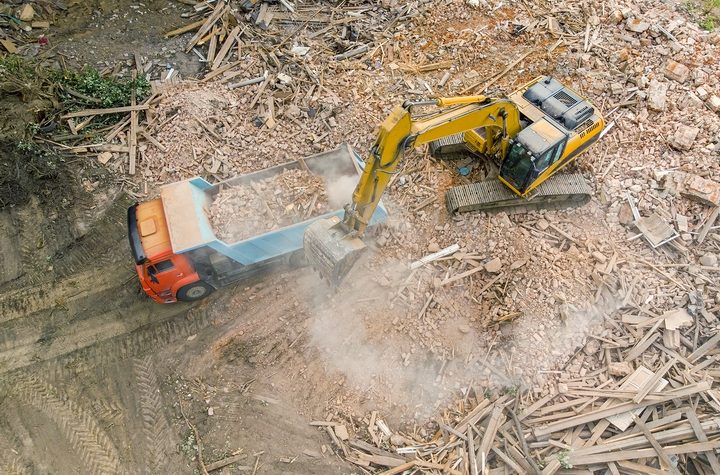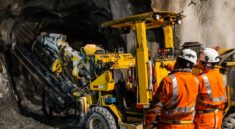The key to controlling dust is to contain as much of it as possible at its source and then use a dust control solution to get rid of it. Dust presents many hazards to manufacturing and construction workers. These include safety and health risks precipitated by flyaway dust.
The problem with flyaway dust is that it can find its way into any place. In the past, there have even been incidences of combustible dust deaths. Dust has also been known to cause damage to property. To help you manage dust in a controlled environment, study these nine best practices for dust control in manufacturing and construction:
1. Employ regular dust cleaning practices.

Dust generated as a result of manufacturing or construction activity is comprised of tiny particles of wood, metal, ceramic, concrete, and powdered crystal. This type of dust is a safety and health risk since it’s combustible and toxic.
Dust from cutting, grinding and sandblasting contains silica, which can be quite harmful to workers at a manufacturing site. If they are exposed to such dust hazards regularly, they are likely to develop respiratory diseases and skin conditions, such as dermatitis and allergic reactions.
Besides, manufacturing dust could be explosive. When combustible dust comes into contact with air, it explodes. Such dust includes various substances from grain, metal, sugar and flour. To manage these risks, you need to observe regular cleaning practices in your worksite and construction zone.
2. Get a duct control solution

While there are many dust control solutions on the market, you will need to consider several things before picking one. The first feature of an effective dust control system is its productivity. The key feature of an efficient dust control system has to do with the manufacturer. Choose an experienced manufacturer with a reputation for creating effective dust collection systems.
Make sure their products meet every regulation. They should offer you after-sale service should the unit develop issues after installation. Lastly, the system should be ergonomically appropriate. Most manufacturing companies ignore this factor.
3. Sweep the dust away with a broom.

While sweeping doesn’t entirely get rid of dust hazards, it’s better than nothing. It’s one of the intuitive things we do when confronted with dust. We also tend to run to the compressor to blow it away.
These methods of dust control are, however, not sufficient, especially when dealing with combustible dust that could explode upon contact with air. Nonetheless, if a broom and blower are all you have, and the dust is not flammable, use them. However, bear in mind the fact that they may not eliminate the potential health and safety risks.
4. Regularly clean hidden areas.

While assigning cleaning duties, don’t forget areas that are often overlooked. These include areas inside vent shafts, behind false ceilings, and above support beams. Since they are not visible, these areas are often forgotten, resulting in dust accumulation over time.
5. Identify the type of dust you’re dealing with.

Every worker at a manufacturing plant must understand the type of dust the manufacturing process emits. This could be combustible or toxic dust, both of which are extremely dangerous. Once everyone understands the kind of dust they are dealing with, they’ll be less likely to overlook effective dust control measures. It becomes everyone’s responsibility to safely and effectively remove dirt from every conceivable surface to avoid its accumulation.
Once you identified the type of dust you’re dealing with, you need to find a way to stop it. The most effective dust control solution is one that captures most of the dust at its source. To stop airborne dust, direct it to a machine or hood connection point via a duct system, and then transfer it to a dust collector.
6. Design a dust-free workplace.

Having a dust-free workplace starts with a design that’s built to minimize or eliminate dust. Such a design should reduce or eliminate unused flat surfaces to make sure dust has nowhere to accumulate.
If your company is undertaking retrofitting or renovations, it’s advisable to have a dust-mitigating design. This way, you cut the time workers spend on cleaning duties and, at the same time, prevent hazards.
7. Abide by the stipulated regulations.

If a manufacturing process results in dust (and it will), several regulations must be adhered to. Establish what these regulations are and make sure every employee follows them. They should understand the potential dust hazards they may be exposed to and how to minimize or eliminate these hazards.
Employers should make sure employees work in a safe environment that’s free of hazards. Whether toxic or combustible, the employer should put in place mechanisms of safely getting rid of dust at the workplace, at least 99% of it, according to the laid down regulations.
8. Use properly maintained and serviced equipment.

Make sure your manufacturing and construction equipment are working as they should. If not, this could decrease their efficiency, which might lead to the generation of dust.
It’s critical to regularly inspect such installations to ensure they are working at all times. After an inspection, they should be serviced and maintained in line with the manufacturer’s recommendations. If they are beyond repair, or can no longer work at optimum capacity, replace them.




